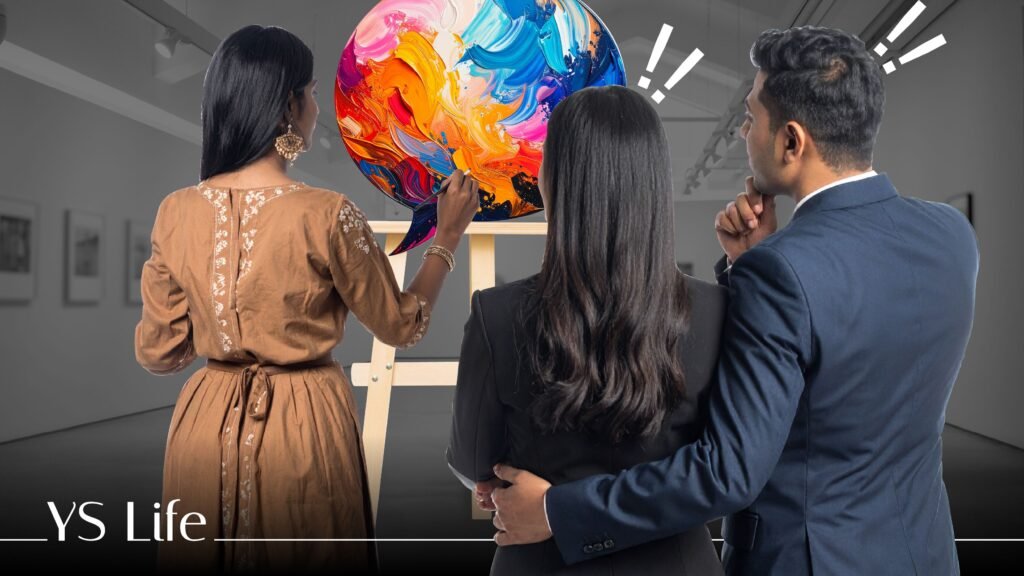
India’s contemporary art landscape is undergoing a quiet but compelling transformation. According to a joint report ‘State of the Indian Art Market’ by Grant Thorton and Indian Art Investor, the Indian art market at auction stood at over $144 million in 2023.
This revolution is fuelled by increasing disposable incomes and greater accessibility to art, thanks to the growing presence of emerging or mid-career artists who are reshaping the vocabulary of Indian art.
These artists, whose practices are marked by conceptual rigour, material innovation, and cultural rootedness, do not work in isolation. Instead, they are strong voices, who, through their works, reflect the diversity, tension, and nuance of the Indian experience.
However, not everything has been hunky dory in the art world—this change has been gradual. While artistic output has flourished over the last decade, systemic support continues to remain uncertain.
Many artists, especially those who don’t reside in metropolitan centres or have access to dominant networks, struggle in the absence of a long-term institutional infrastructure.
In my experience as a gallerist for over 12 years, I have repeatedly encountered this gap. What we are witnessing now, though, is a more value-driven ecosystem—one that views artists not merely as creators of objects but as thinkers, researchers, and agents of cultural dialogue.
But there’s still a long way to go.
To accelerate the momentum, we need to reimagine frameworks through which we support and understand art in India.
Rethinking labels, deepening practice
Using terms like ‘emerging’ and ‘mid-career’ serve as convenient shorthand in the market but they rarely capture the complexity of an artist’s evolution.
It’s finally time to move past these reductive classifications and begin asking more meaningful questions:
Is the work urgent? Is it intellectually rigorous? Does it speak to our times?
These are enquiries that will help us identify practices, both mature and in motion. Sometimes, there may be artists who won’t fit into these established buckets but whose voices are vital. That’s why it’s crucial to build an ecosystem that values long-term enquiry, risk, and resilience over short-term visibility.
This is particularly important for vernacular voices, whose work is rooted in local contexts and languages but doesn’t find the ‘right avenue’ due to universal concerns. Often, these artists get sidelined even when they have the power to transform the landscape of Indian art.
A new generation of collectors and patrons
One of the most promising developments in recent years has been the rise of a more engaged, reflective collector base. The patrons of today are young professionals,
diasporic collectors, and culturally curious individuals—who are not just investing in art objects but also in ideas. They seek engagement with the inner worlds of artists, with narratives and their processes.
This shift has enabled more meaningful relationships between artists and collectors, gradually reshaping how contemporary Indian art is valued.
Collecting is no longer just about ownership—it is about participating in a living, evolving cultural discourse.
Thus, it’s time to leverage this shift and find sustainable outcomes that can support the growth of meritorious artists, and in turn, lead to the success of the Indian art market.
Looking ahead
While reliance on marketplace or institutional support continues to be in focus, the future of Indian art needs to be more solid. It must be nurtured through collaborative ecosystems that foster experimentation, build archives, and transform exhibitions into discursive spaces.
We are at a pivotal moment in Indian art. There’s talent, a refined audience that appreciates and values art like never before, and conversations that are fuelling more ideas and solutions.
But for this momentum to translate into long-term impact, it must be matched by sustained, inclusive support, across cities, languages, and mediums.
If we can commit to building systems that uphold artistic integrity, amplify vernacular voices and nurture critical inquiry, we will not only empower individual artists but will be able to contribute to shaping the future of Indian art history. A history that’s expansive, plural and deeply rooted in both tradition and transformation.
And that, I believe, is the most meaningful work we can do—as curators, patrons, institutions, and stakeholders in the evolving cultural narrative of our time.
The author is Founder-Director of Art Centrix Space.
Edited by Swetha Kannan
(Disclaimer: The views and opinions expressed in this article are those of the author and do not necessarily reflect the views of YourStory.)

